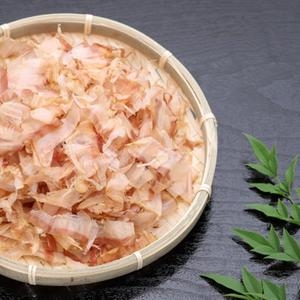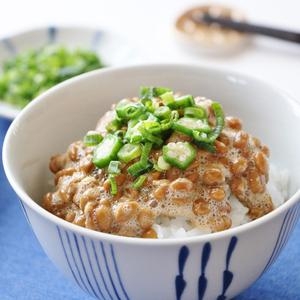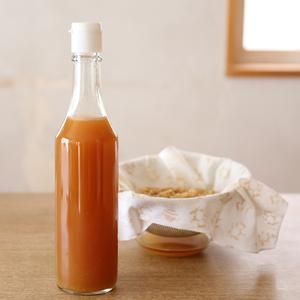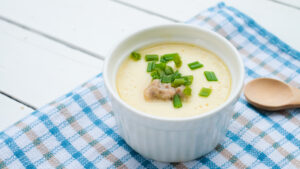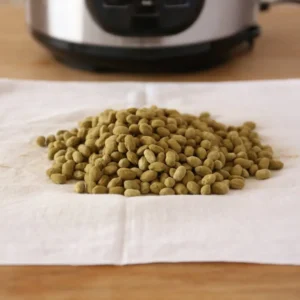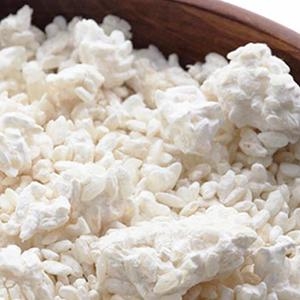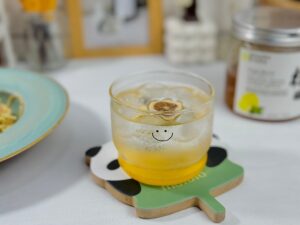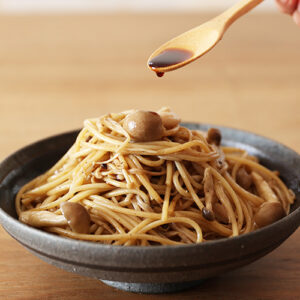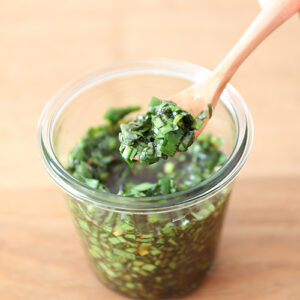
If you search for Japanese foods on the internet, you might stumble upon Japanese dancing fish flakes. These fish flakes are so thin that some amount of warm steam makes them waver and curl, as if they are wiggling and dancing.
If what you saw is like the thing in the image above, then its name is actually “katsuobushi” or bonito flakes.
But what exactly is bonito flakes and how was it made?
In this article, we will tell you a lot of things about bonito flakes, also called katsuobushi.
What is Bonito Flakes?
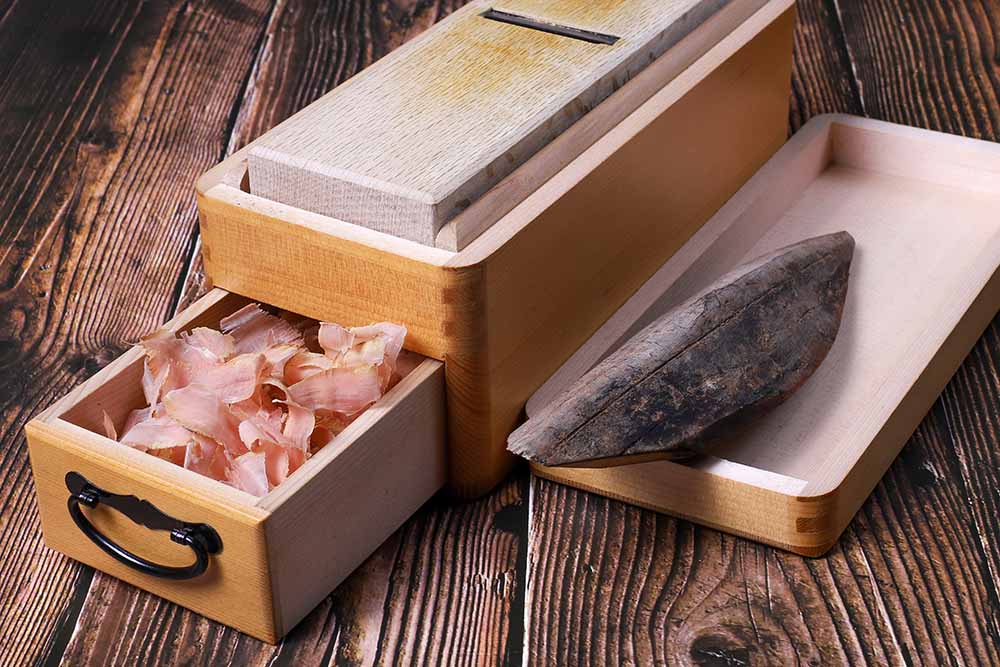
Bonito flakes are simmered, smoked fish that have been shaved very thinly. Bonito flakes are made from skipjack tuna or bonito, a kind of fish that is closely related to mackerel.
Bonito flakes can be used on a wide variety of dishes and is really delicious on its own. By how tasty the flakes are, you wouldn’t expect that they are not seasoned at all. Their umami taste is purely from the fish and that flavor is intensified through a long steady process of smoking and drying.
That is why bonito flakes are commonly used to make Japanese dashi broth, a broth made from bonito flakes, kombu kelp, and other additional ingredients. You can say that this broth is the foundation of many Japanese dishes.
The Umami in Bonito Flakes
Bonito flakes have a smoky, savory, and slightly fishy flavor.
“Umami”, a source of savory flavor, is considered as one of the 5 fundamental tastes along with sweet, sour, salty and bitter. What makes “umami” taste in bonito flakes is glutamic acid and inosinic acid. With bonito flakes being particularly high in inosinic acid, it can bring depth and complexity in umami flavor.
Aroma is also an essential part of the savory flavor of bonito flakes. The long and intense process of smoking and drying (plus the mold applied to the fermentation process in the Karebushi bonito flakes) bring out this special aroma.
Types of Bonito Flakes
Based on whether it’s added with mold or not before the shaving process, bonito flakes are generally categorized into two types:
Arabushi
“Arabushi” refers to a piece of bonito that has not been molded. It is a cleaned, boiled, dried and smoked bonito fillet. It features a strong scent of bonito that is not moldy and is also preferred for its relatively low cost. Its dashi has a strong and distinct dried and smoked lingering aroma, and a deep and slightly acidic flavor.
About 80% of the commercial bonito flakes are made from Arabushi bonito. Arabushi is about 19-22% in moisture content.
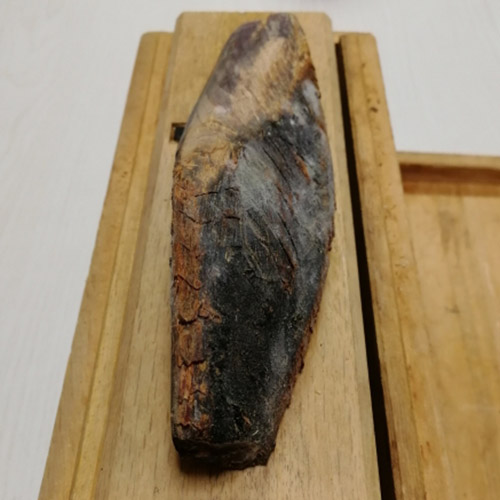
Karebushi
“Karebushi” is dried bonito which has mold applied on it. It is made by shaving off the fat from the surface of “Arabushi” and repeating the application of the mold and dry process several times. Japan’s traditional method of making authentic karebushi (honkarebushi), the highest-quality katsuobushi, is labor-intensive, and takes about six months to complete.
The mold will enhance its flavor further, therefore karebushi will create the aromatic, elegant and firm flavored dashi. The karebushi has a deeper flavor than arabushi and usually has a higher price than arabushi bonito. Chefs around the world love it for its richness, flavor, bitterness, and acidity that perfectly play in harmony.
Karebushi is about 14-17% in moisture content.
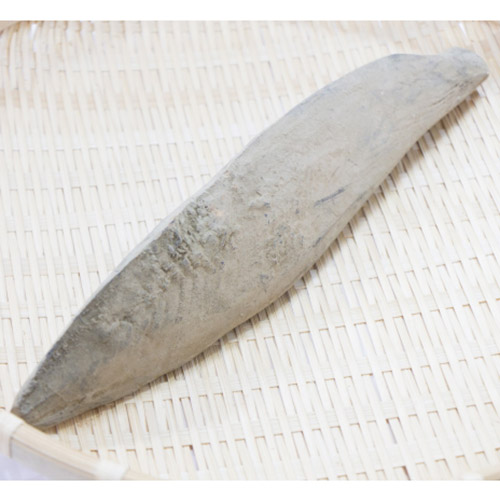
How Bonito Flakes Are Made
1. Slicing (Namagiri)
The head of the bonito fish is cut, its gut and fins are removed. Then, fish is cut into 4 fillets, which are two parts from dorsal sections and two abdominal sections. The dorsal fillet is called “obushi” and the abdominal fillet is called “mebushi”.
2. Arranging (Kagotate)
In order to make it easier to perform the simmering step, the sliced fish meat is arranged neatly in a container so that it won’t collapse even when being simmered.
3. Simmering (Shajuku)
After the fillets of bonito fish are placed and arranged in a metal basket called “nikago”, the fillets are simmered for a few hours. The difference in temperature and time is determined by the craftsman according to the fish body and freshness of the fish. This critical stage is handled with extra care because this largely affects its final shape. Proteins found in fillets are completely coagulated and water found in muscles is distributed in this process.
4. Deboning (Honenuki)
After simmering and cooled down, the bones in the fillets are manually removed using tweezers carefully without damaging the fillets. This process cannot be done with machines.
5. Repair (Shuzen)
Fish paste is applied on each fillet to fill in cracks and lines from the deboning for a perfect finish. This also helps distribute water in fish to create good dried bonito.
6. Smoking-Drying (Baikan)
Next is the smoking and drying process. Bonito fillets are smoked repeatedly.
Depending on the size of filets, smoking and the moisture removing process called “anjo” are repeated 6 to 15 times. That process is repeated for 2 weeks to a month until the water content is reduced to about 23%.
The dried bonito made until this step is the “Arabushi”. After this, arabushi fillets are ready to be shaved thinly.
These next few extra steps are only for karebushi bonito flakes.
7. Scraping (Kezuri)
The surface of arabushi is scraped off to remove fat. The surface has to be smoothly scraped so mold will easily stick to the dry fillet.
8. Mold Application (Kabitsuke)
After the water is removed, good mold bacteria are applied on dried bonito to bring out the flavor and to preserve it. The mold will start to grow in several weeks, then the dried bonito fillets go through the process of sun drying and mold application repeatedly for a few months. Finally, “Honkarebushi” is finished. The dried bonito made until this step is the Honkarebushi. After mold application, karebushi is ready for shaving.
How to Use Bonito Flakes
Bonito flakes can be eaten as it is, or used in various dishes as an add-on, topping, and ingredient.
But one main use of bonito flakes used in Japanese dishes is to make dashi (Japanese broth/soup stock).
Dashi, the traditional Japanese stock, is an indispensable part in Japanese cuisine because of its flavor enhancing action and hence sometimes referred to as ‘the heart of Japanese cuisine’. It is a basic Japanese stock or broth which can be made from various ingredients.
Dashi is used to add flavor to not only soup but also to Japanese salad and simmered dishes in Japan. The three most popular ingredients used in making dashi are shiitake mushrooms, kombu kelp, and katsuobushi or dried bonito flakes. Each contains a large quantity of umami substances: shiitake containing guanylic acid; katsuobushi, inosinic acid; and kombu, glutamic acid.
Here is a simple recipe to make bonito broth (katsuo dashi), a Japanese-style broth made from bonito flakes.

Katsuo Dashi Stock
Ingredients
- 30 g Bonito Flakes
- 1000 ml Water
Instructions
- Add water to a pot and turn on the heat, then turn off the heat when it's boiling.
- Add bonito flakes to the boiled water and wait 1 to 2 minutes.
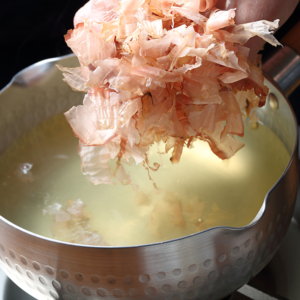
- Drain the bonito flakes with cloth, kitchen paper, or strainer.
Want to know more about dashi stock? Check out this article:
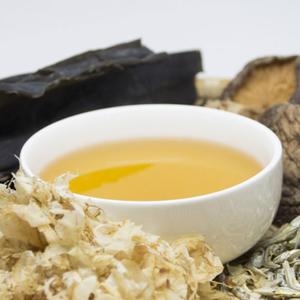
Other than making dashi stock, you can also use bonito flakes in all kinds of ways. Here are some of them:
Vegetable topping
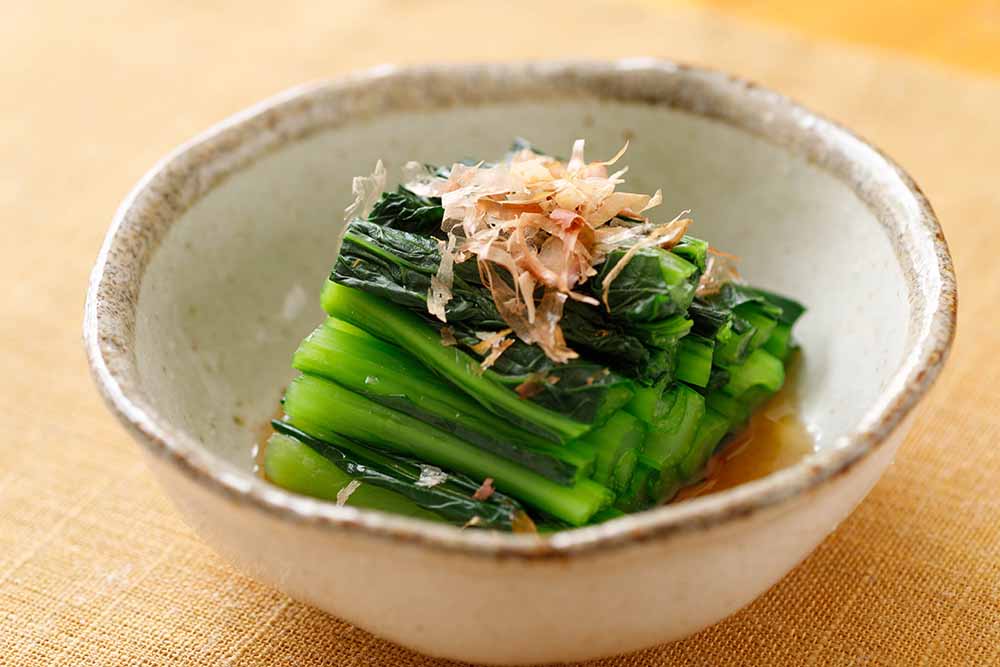
Added on Okonomiyaki
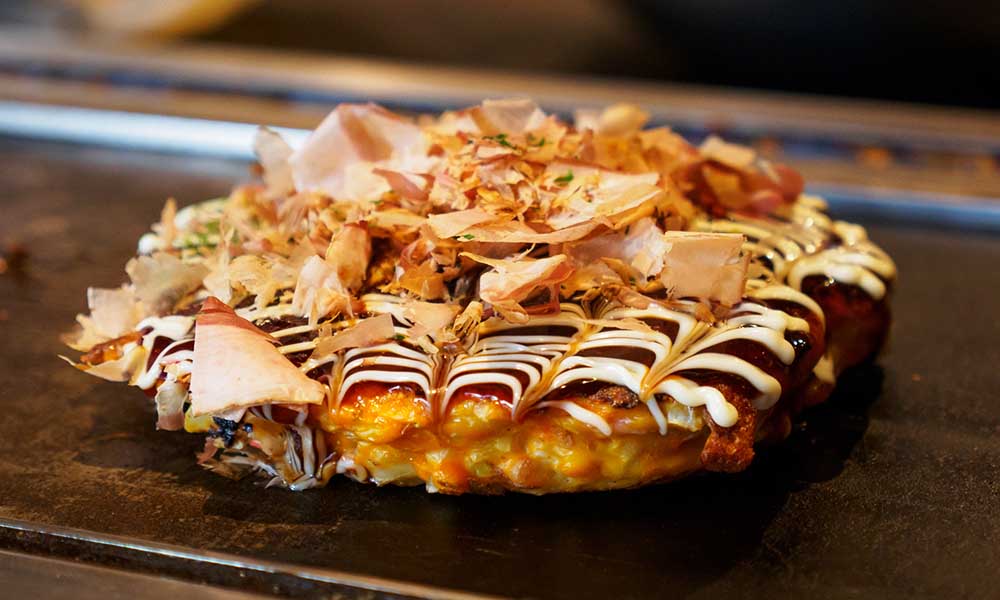
Mixed with ramen
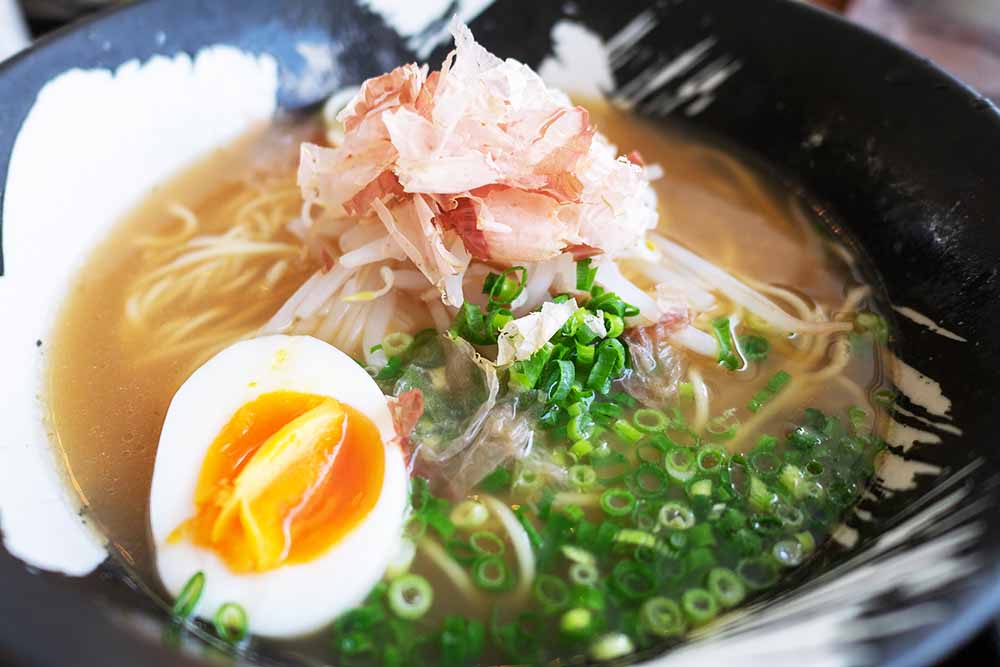
Sprinkled on sushi roll
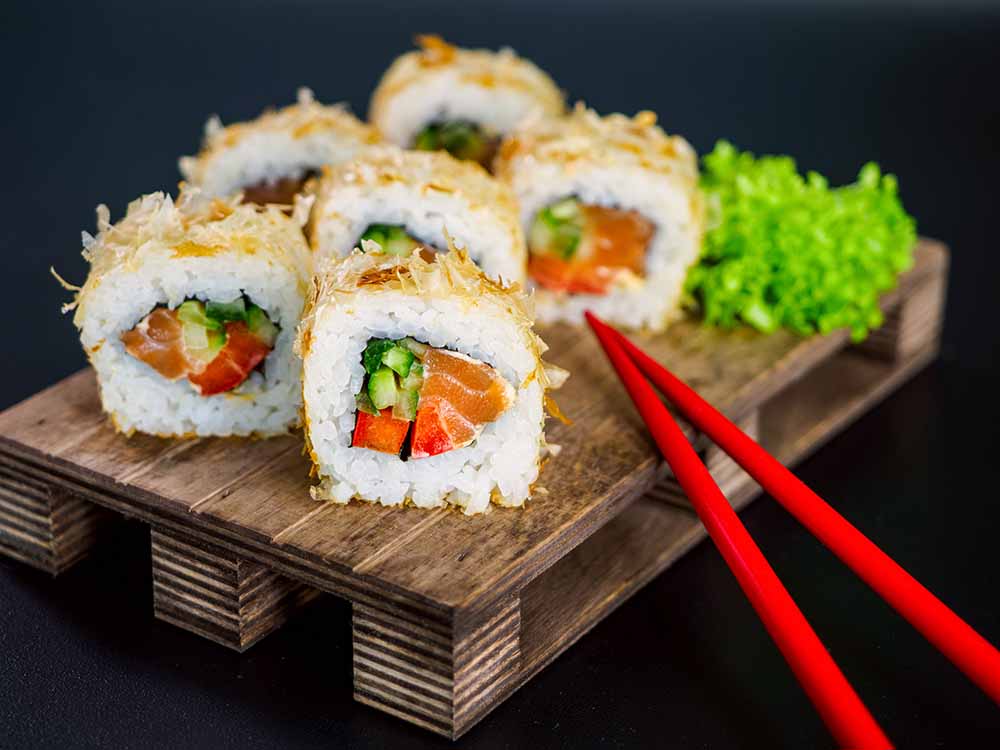
Recipes Using Bonito Flakes
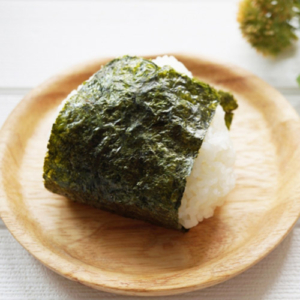
Onigiri (Rice Ball) with Crab Sticks, Bonito Flakes, and Mayonnaise
Ingredients
- 150 g Rice
- 1 tbsp Bonito Flakes
- 1 Crabstick
- 1 teaspoon Mayonnaise
- 1 Sheet Nori
- 1 Pinch Salt
Instructions
- Put plastic wrap on a plate. Spread the rice on the wrap and put the bonito flakes, crabstick, and mayonnaise on the rice. You put crab stick as it is or slice it into small pieces.
- Roll the rice until it's shaped into a ball.
- Sprinkle salt on the whole surface of the onigiri, and wrap it with nori seaweed.Your onigiri is ready to eat!
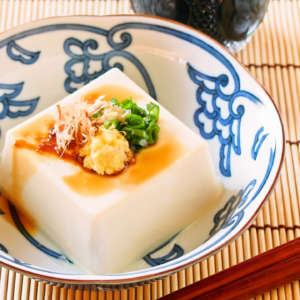
Japanese Chilled Tofu
Ingredients
- 300 g Soft Tofu
- 3 g Bonito Flakes
- 5 g Grated Ginger
- 2 g Cut Green Onion
- 1 tbsp Soy Sauce
Instructions
- Divide the tofu in half to make 2 servings.
- Add bonito flakes, grated ginger, and green onion on top of the tofu, then splash a little soy sauce on top. You can also use ponzu sauce instead of soy sauce if you want a sharper, fresher taste.
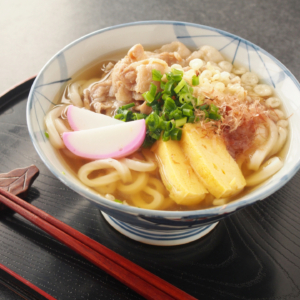
Udon With Katsuo Dashi Stock
Ingredients
- 15 g Bonito Flakes
- 1 tbsp Mirin
- 1 tbsp Soy Sauce
- 450 g Water
- Green Onion for garnish
- 80 g Fish Cakes
Instructions
- Add water to a pot and boil over medium heat.
- When it starts bubling, add the bonito flakes and let simmer for 1-2 minutes. Then strain the bonito flakes from the soup.
- Add udon, fish cakes, and other ingredient that you like to the broth. Boil over medium heat.
- Add mirin and soy sauce. If you feel the broth is not salty enough, you can always add a pinch of salt.
- Move the udon into a bowl and garnish with cut green onion.
Health Effects of Bonito Flakes
A lot of research has been conducted regarding the health effects of bonito flakes, especially dried bonito broth or katsuo dashi, which is a broth made from bonito flakes. Katsuo Dashi is rich in inosinic acid content, which is also responsible for the umami flavor. This component has the ability to activate body cells. This will lead to an anti-aging effect. Bonito flakes are also really rich in amino acids that the human body cannot produce which are fundamental to keep your body healthy. Moreover, some research have shown that katsuo dashi made by bonito flakes may improve the mood states, lower blood pressure, and support antiobesity and anti-inflammatory effects

Bonito Flakes Q&A
- What are bonito flakes?
- To put it simply, bonito flakes are simmered, smoked dried fish that has been fermented and shaved very thinly. The fish ingredient itself is skipjack tuna or bonito, a fish that is closely related to mackerel.
- How are bonito flakes made?
- Skipjack tuna or bonito fish is cleaned and has the head and tail removed. After that it is boiled and deboned. Then it is smoked for a few days. In this step, the fish will obtain its characteristic aroma and taste. Then it is shaved thinly.
The Karebushi type still needs to be added with mold, then it is shaved thinly.
- Do they add seasoning when they make bonito flakes?
- No. The delicious taste is purely from the fish. The smoking process does really bring out the taste. That’s why you can even make dashi stock just by boiling bonito flakes.
- Why do bonito flakes move?
- Bonito flakes are so thin and light that some amount of warm steam makes them move. When they come in contact with hot foods, the layers of muscle fibres in the bonito flakes rehydrate in different directions and at different rates due to different thicknesses.
- I heard that there are bonito flakes that are added with mold before it is shaved. Is it safe to eat?
- Of course! The mold is added in a controlled environment so there won’t be any unwanted germs in the fish. Besides, the mold will add a deeper taste to the bonito flakes. So it’s worth a try.
- Where can I buy bonito flakes?
- You can find bonito flakes in stores that sell Asian foods near you. You can also buy it via online stores. Bonito flakes are pretty well known these days, so it should be easy to find outside Japan.
Bonito flakes are often sold by its Japanese name, katsuobushi, on the packaging. So you might want to look for it in Japanese, “katsuobushi” or “鰹節” or “かつお節”, or by its other name, “kezuribushi” or “削り節”.
- Are bonito flakes good for health?
- Bonito flakes have a lot of health benefits. It has an anti-aging effect, fatigue-relief effect, antiobesity and anti-inflammatory effects, lowering blood pressure, and improving mood.
- How to properly store bonito flakes and prevent it from being stale quickly?
- Store in a refrigerator in a sealable plastic bag.
Bonito Flakes Product Recommendations

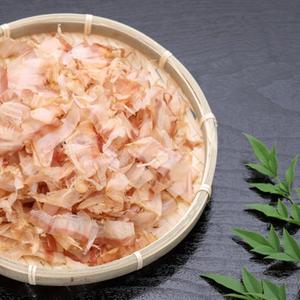
 Content List
Content List